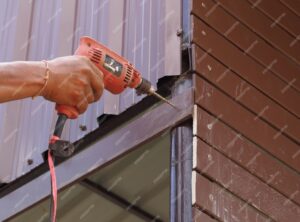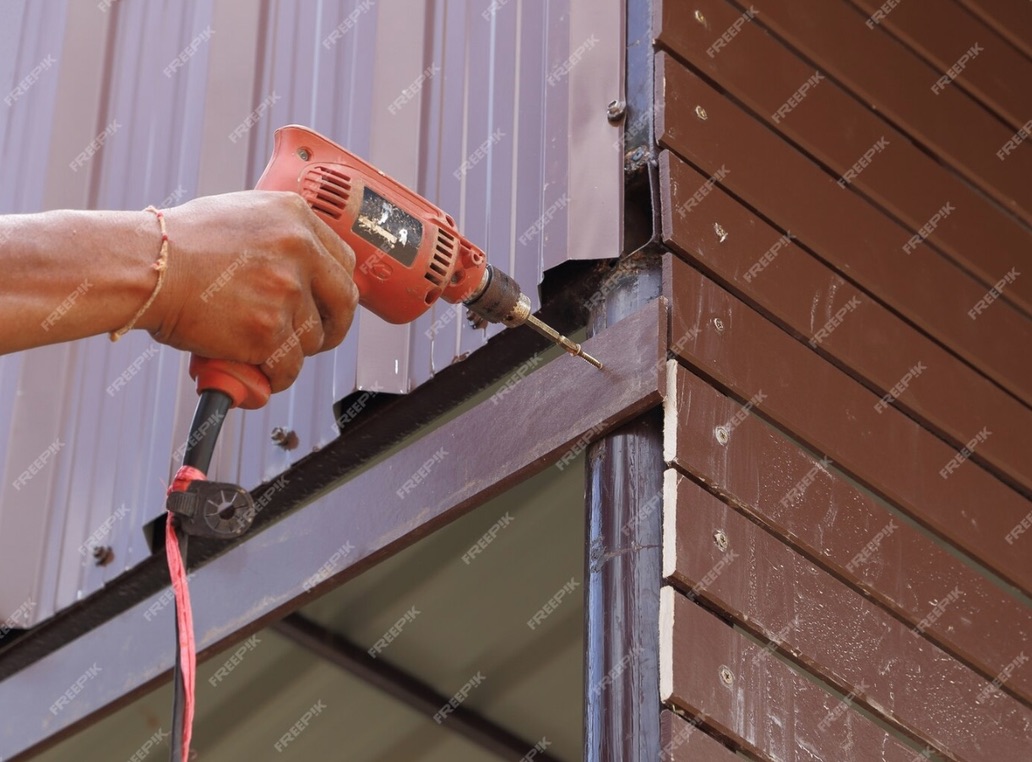Essential Tools for Siding Installation – Installing siding is an excellent way to improve the appearance and durability of your home, and it’s a project that many homeowners can successfully complete themselves. However, before you dive into this DIY venture, it’s important to understand that the right tools can make a huge difference in the quality and efficiency of your work.

Whether you’re replacing existing siding or installing new siding for the first time, having the essential tools for siding installation at your disposal is crucial. In this guide, we’ll walk you through the must-have equipment you’ll need to get the job done right, from start to finish.
Why the Right Tools Matter in Siding Installation
Using the correct tools for siding installation doesn’t just make the job easier — it also ensures your work is professional and long-lasting. Proper tools help you achieve precise cuts, secure the siding properly, and protect the integrity of the materials you’re working with. Additionally, having the right equipment can reduce the time spent on the job, making your project more efficient.
Whether you’re working with vinyl, wood, or fiber cement siding, the following tools are essential for a successful installation.
1. Measuring and Marking Tools
Accurate measurements are the foundation of any siding project. Without proper measurements, you risk cutting panels incorrectly, resulting in wasted materials and potential issues with the siding’s fit.
Tape Measure
A good-quality tape measure is a must-have. It will help you measure the height, width, and length of your walls to ensure you cut each siding panel to the correct size. A tape measure with a locking mechanism can help you keep your measurements steady while you mark.
Chalk Line
A chalk line is an essential tool for marking straight, even lines along your walls. You’ll use it to create a reference line for installing your first row of siding, ensuring that each row of siding is level and aligned.
Level
A level is critical for ensuring that your siding is installed correctly. Whether you’re hanging the siding or aligning it with trim, a level will help you check that the panels are straight and properly aligned.
2. Cutting Tools
Siding materials such as vinyl, wood, and fiber cement require different types of cutting tools. Using the right equipment ensures you get smooth, accurate cuts without damaging the material.
Circular Saw
A circular saw is one of the most commonly used tools for cutting siding, especially for wood and fiber cement panels. You can use it to cut through thick panels quickly and accurately. Make sure to use a saw blade designed for siding materials (e.g., carbide-tipped blades for fiber cement).
Utility Knife
For vinyl siding, a utility knife is often sufficient for cutting. It’s also a useful tool for trimming the edges of panels and making fine adjustments during the installation process. Utility knives are great for making clean, straight cuts on soft materials.
Jigsaw
If you need to make curved cuts or cut around windows, doors, or other obstacles, a jigsaw will give you the precision you need. A jigsaw allows for more intricate cuts compared to a circular saw, making it ideal for cutting around non-linear shapes.
3. Fastening Tools
Once you’ve measured and cut your siding, you need to secure the panels properly. Using the right fastening tools ensures your siding stays in place and is weatherproof for years to come.
Hammer or Nail Gun
For most siding installations, you’ll either use a hammer or a nail gun to fasten the panels to the wall. A nail gun (also known as a pneumatic nailer) can make the job faster and more efficient by quickly driving nails into the studs. However, if you’re working with a more delicate material like vinyl, a hammer may give you more control and prevent damage.
When using a nail gun, choose a model that’s designed for siding installation and that accommodates the correct size nails for the siding material you’re using.
Screws and Nails
The type of fastener you use depends on the material of the siding. For example, galvanized nails are often recommended for wood and vinyl siding, while screws may be needed for heavy materials like fiber cement. Always ensure you are using the right length and type of nails or screws to avoid damaging the siding.
4. Safety Gear
Working with power tools and heavy materials can be dangerous if you don’t take the proper precautions. Investing in safety gear will help protect you during the installation process.
Safety Glasses
Whether you’re cutting, nailing, or handling siding panels, safety glasses are a must. They protect your eyes from dust, debris, and flying materials, which can cause injury.
Work Gloves
Wearing work gloves protects your hands from sharp edges, splinters, and other potential hazards. They also provide a better grip when handling siding materials, reducing the risk of dropping or mishandling panels.
Hearing Protection
If you’re using loud tools like a circular saw or nail gun, wearing hearing protection such as earplugs or earmuffs is a good idea. Prolonged exposure to loud noise can cause hearing damage, so it’s important to protect your ears during the installation process.
5. Ladders and Scaffolding
For homes with multiple stories or hard-to-reach areas, a ladder or scaffolding is essential for safety and efficiency. Working at height can be risky without the proper support, so make sure you invest in a sturdy, adjustable ladder or scaffold system to reach the upper levels of your home.
Ladder
For smaller homes or single-story projects, a ladder may be sufficient. Choose a ladder with a high weight capacity, and ensure it’s positioned securely against the home.
Scaffolding
For larger projects or multi-story homes, scaffolding is often necessary. Scaffolding provides a safer and more stable platform to work from, reducing the risk of accidents while working at height.
6. Sealing and Finishing Tools
Once your siding is installed, you’ll need to finish the job by sealing gaps and ensuring that the siding is weatherproof.
Caulking Gun
A caulking gun is essential for applying sealants around windows, doors, and joints. Caulk helps prevent water infiltration, which can cause damage to the underlying structure. Choose a high-quality exterior-grade caulk that is compatible with the siding material.
Trim and Flashing Tools
Trim and flashing tools will be required for adding finishing touches to the edges of your siding. These materials help to seal the siding at corners, windows, and doors, preventing water damage.
Conclusion: Ready to Tackle Your Siding Project?
Having the right tools for siding installation can make all the difference in ensuring a smooth and successful project. From measuring and cutting to fastening and finishing, each tool plays a crucial role in achieving a professional-quality result.
By investing in the essential tools for siding installation, you’ll be well-prepared to tackle the job with confidence. Remember to take your time, follow safety precautions, and choose quality materials to ensure that your siding will last for years to come.
If you’re not sure where to start, consider renting or borrowing some of the more specialized tools. Whether you’re installing vinyl, wood, or fiber cement siding, the right tools will help you get the job done efficiently and safely. Happy siding!
